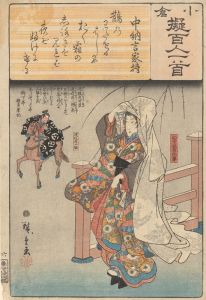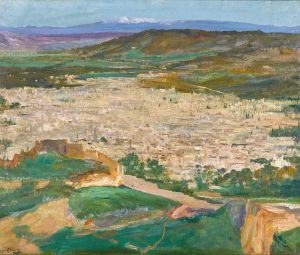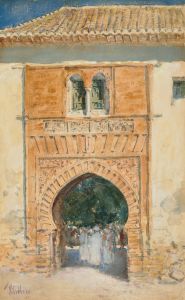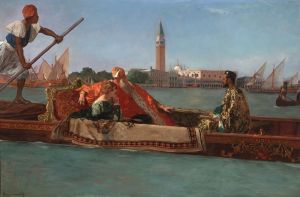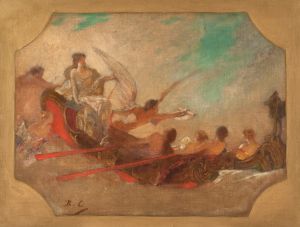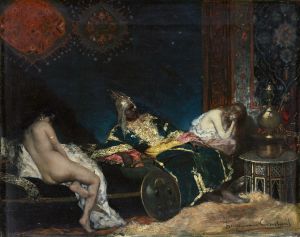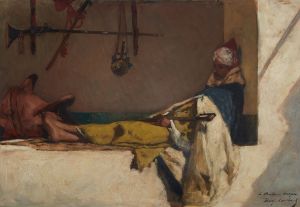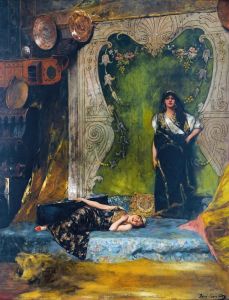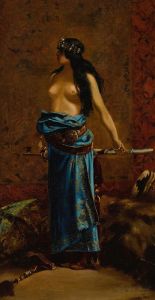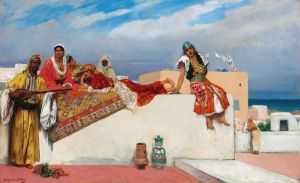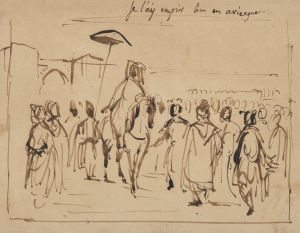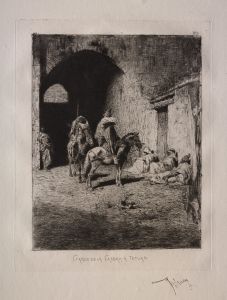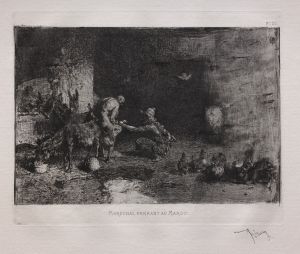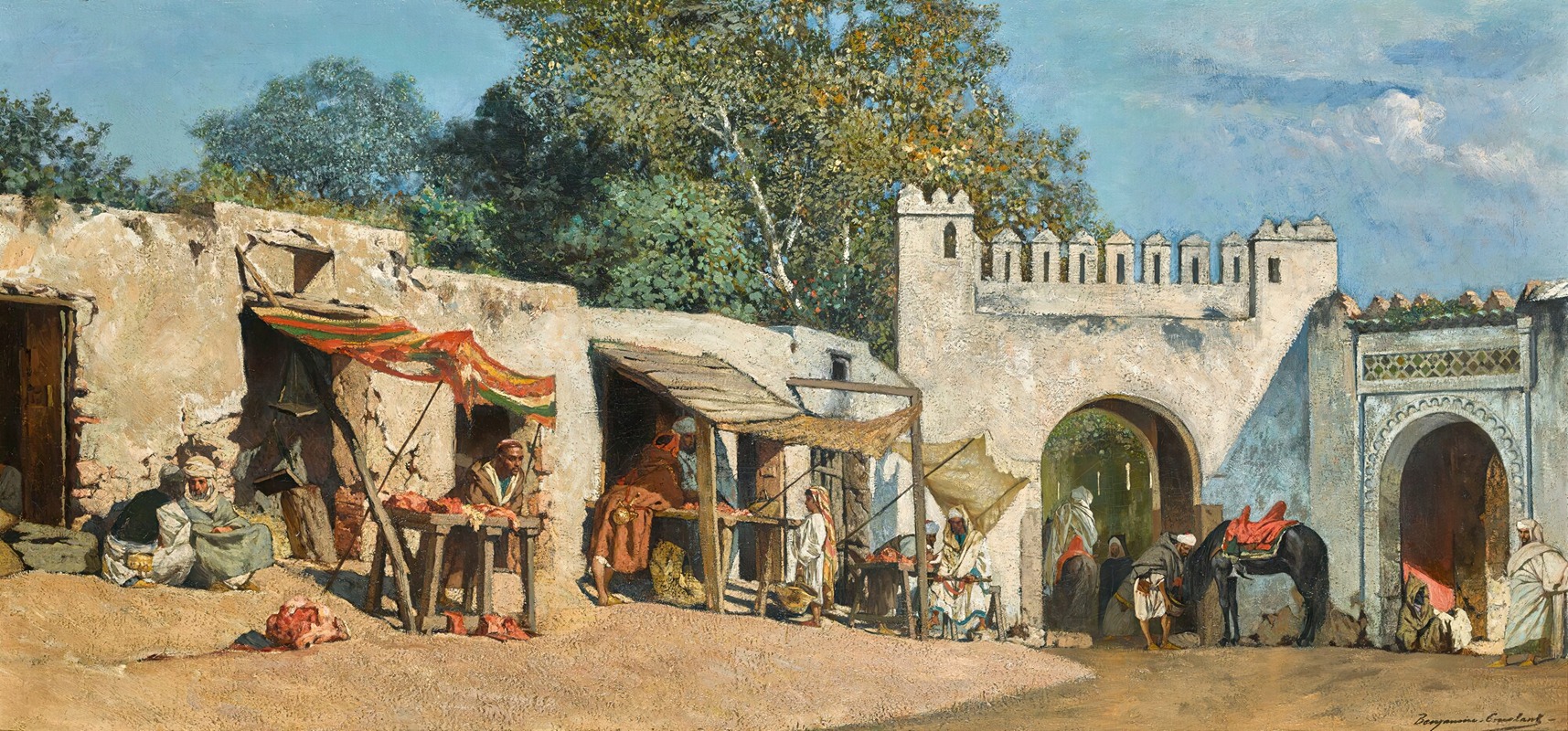
The Bab el Fahs gate, Tangier
A hand-painted replica of Jean-Joseph-Benjamin Constant’s masterpiece The Bab el Fahs gate, Tangier, meticulously crafted by professional artists to capture the true essence of the original. Each piece is created with museum-quality canvas and rare mineral pigments, carefully painted by experienced artists with delicate brushstrokes and rich, layered colors to perfectly recreate the texture of the original artwork. Unlike machine-printed reproductions, this hand-painted version brings the painting to life, infused with the artist’s emotions and skill in every stroke. Whether for personal collection or home decoration, it instantly elevates the artistic atmosphere of any space.
Jean-Joseph-Benjamin Constant was a notable French painter and Orientalist, recognized for his vivid depictions of scenes from North Africa and the Middle East. Born in 1845 in Paris, Constant was a student of Alexandre Cabanel at the École des Beaux-Arts. He became part of the Orientalist movement, which was characterized by its romanticized portrayal of the East, often focusing on the exotic and the picturesque aspects of these regions.
One of Constant's works, "The Bab el Fahs Gate, Tangier," captures a scene from the Moroccan city of Tangier. Tangier, a city with a rich history due to its strategic location at the entrance of the Strait of Gibraltar, has long been a cultural crossroads between Europe and Africa. The Bab el Fahs gate is one of the historical gates of Tangier, serving as a significant entry point into the city. It is part of the old medina, which is known for its narrow winding streets and traditional Moroccan architecture.
Constant's painting of the Bab el Fahs gate reflects his interest in the daily life and architecture of North Africa. His works are characterized by meticulous attention to detail and vibrant use of color, which bring to life the bustling atmosphere of the scenes he depicted. In "The Bab el Fahs Gate, Tangier," Constant likely aimed to capture the essence of Tangier's lively street life, with the gate serving as a focal point that frames the activities and interactions of the people in the scene.
The painting is an example of Constant's ability to blend realism with the romantic allure of Orientalism. His works often feature a mix of architectural elements, local inhabitants, and the play of light and shadow, which together create a dynamic and engaging composition. Constant's portrayal of Tangier would have appealed to European audiences of the time, who were fascinated by the exoticism and mystery of the Orient.
Throughout his career, Constant traveled extensively in North Africa and the Middle East, drawing inspiration from the places he visited. His travels informed his artistic practice, allowing him to create works that, while romanticized, were grounded in his observations and experiences. Constant's paintings were well-received in his lifetime, and he exhibited regularly at the Paris Salon, where he gained recognition for his contributions to the Orientalist genre.
"The Bab el Fahs Gate, Tangier" is a testament to Constant's skill as an artist and his ability to convey the vibrancy and diversity of life in North Africa. While specific details about the painting, such as its current location or the exact year it was painted, may not be readily available, the work remains an important part of Constant's oeuvre and the broader Orientalist movement. Through his art, Constant offered a window into a world that was both familiar and foreign to his European contemporaries, capturing the imagination of audiences with his evocative and richly detailed scenes.





